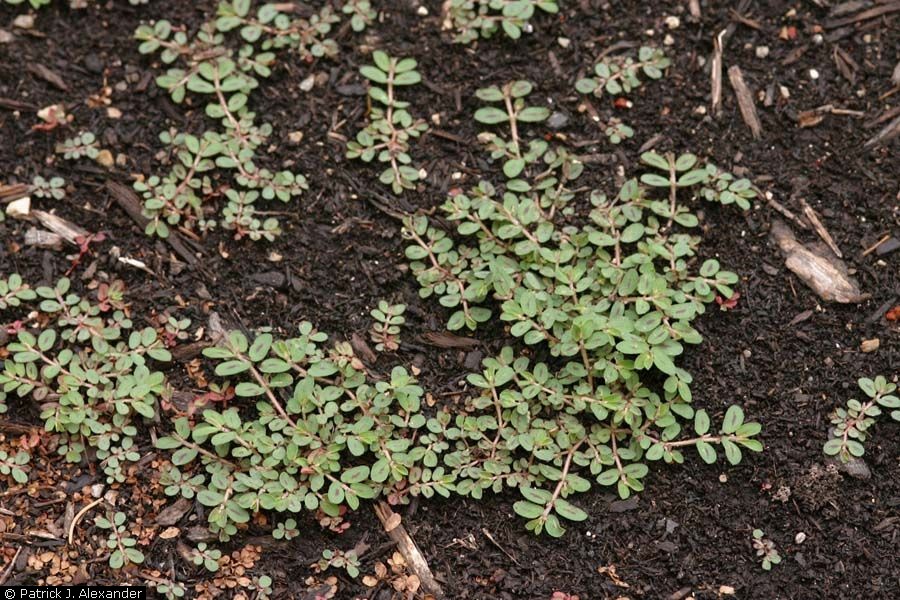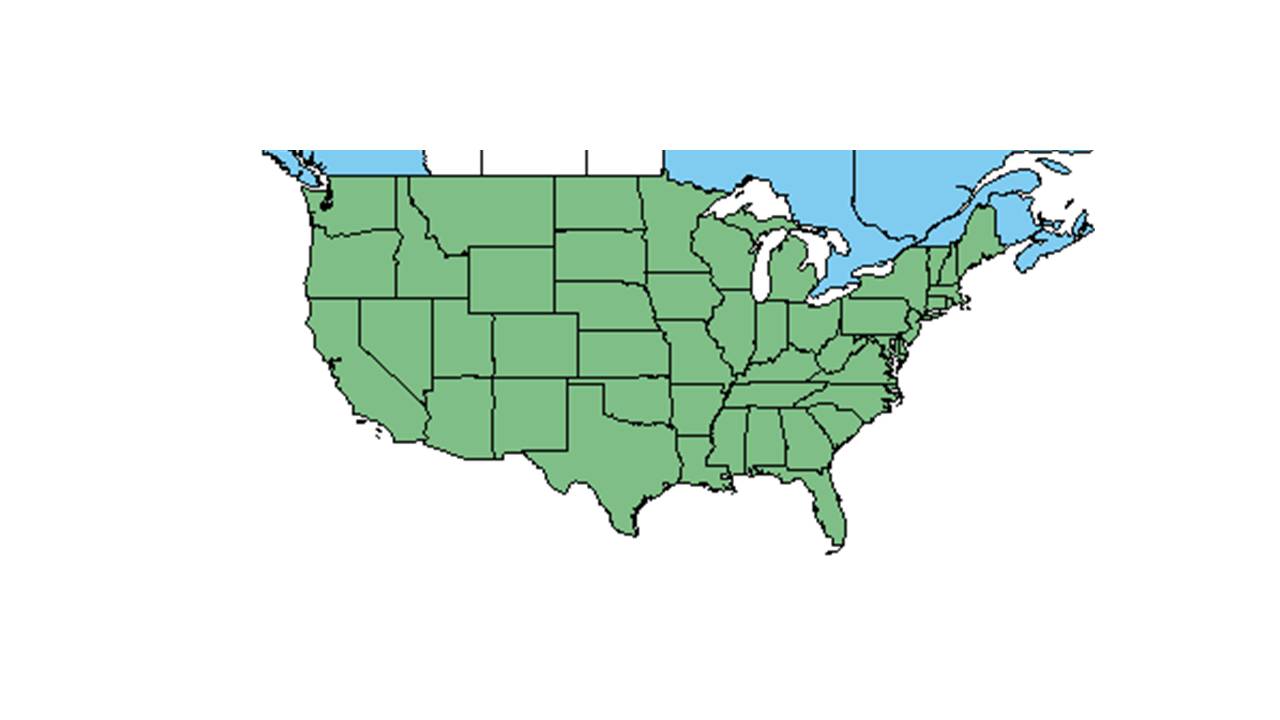Difference between revisions of "Euphorbia maculata"
(→Taxonomic notes) |
Emmazeitler (talk | contribs) (→Taxonomic notes) |
||
| Line 19: | Line 19: | ||
Common name: Spotted sandmat | Common name: Spotted sandmat | ||
==Taxonomic notes== | ==Taxonomic notes== | ||
| − | + | Synonyms: ''Chamaesyce maculata'' (Linnaeus) Small; ''Euphorbia supina'' Rafinesque.<ref name="weakley">Weakley, A.S. 2015. Flora of the southern and mid-atlantic states. Working Draft of 21 May 2015. University of North Carolina at Chapel Hill, Chapel Hill, North Carolina.</ref> | |
| + | |||
| + | Varieties: none.<ref name="weakley">Weakley, A.S. 2015. Flora of the southern and mid-atlantic states. Working Draft of 21 May 2015. University of North Carolina at Chapel Hill, Chapel Hill, North Carolina.</ref> | ||
==Description== | ==Description== | ||
Revision as of 13:22, 16 September 2020
| Euphorbia maculata | |
|---|---|

| |
| Photo by Patrick J. Alexander, hosted by the USDA-NRCS, The PLANTS Database | |
| Scientific classification | |
| Kingdom: | Plantae |
| Division: | Magnoliophyta - Flowering plants |
| Class: | Magnoliopsida – Dicotyledons |
| Order: | Euphorbiales |
| Family: | Euphorbiaceae |
| Genus: | Euphorbia |
| Species: | E. maculata |
| Binomial name | |
| Euphorbia maculata (L.) Small | |

| |
| Natural range of Euphorbia maculata from USDA NRCS Plants Database. | |
Common name: Spotted sandmat
Contents
Taxonomic notes
Synonyms: Chamaesyce maculata (Linnaeus) Small; Euphorbia supina Rafinesque.[1]
Varieties: none.[1]
Description
Euphorbia maculata is a weedy annual herbaceous plant. It tends to grow low to the ground and somewhat repent.[2]
Distribution
Ecology
Habitat
E. maculata prefers moist to wet sandy soils like alluvial sands, moist loamy or clayey sand, and coarse calcareous gravelly soils. It is found in a variety of natural and disturbed community types, including pine flatwoods, sand dunes, river banks, open shorelines, and near brackish marshes. Disturbed habitat includes railways, citrus furrows, cracks in pavement, roadside ditches, and recently clear-cut, site prepared and planted slash pine flatwoods.[2]
Phenology
It has been observed flowering and fruiting in September.[2]
Conservation and management
Cultivation and restoration
Photo Gallery
References and notes
- ↑ 1.0 1.1 Weakley, A.S. 2015. Flora of the southern and mid-atlantic states. Working Draft of 21 May 2015. University of North Carolina at Chapel Hill, Chapel Hill, North Carolina.
- ↑ 2.0 2.1 2.2 Florida State University Robert K. Godfrey Herbarium database. URL: http://herbarium.bio.fsu.edu. Last accessed: June 2014. Collectors: L. C. Anderson, D. Hall, R. K. Godfrey, R. Komarek, L. Neel, R. A. Norris, A. Schmidt, and C. R. Slaughter. States and Counties: Florida: Calhoun, Collier, Franklin, Gadsden, Leon, Liberty, Polk, Taylor, and Wakulla. Geogia: Camden, Clinch, Glynn, and Thomas.